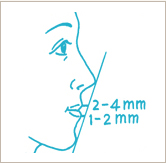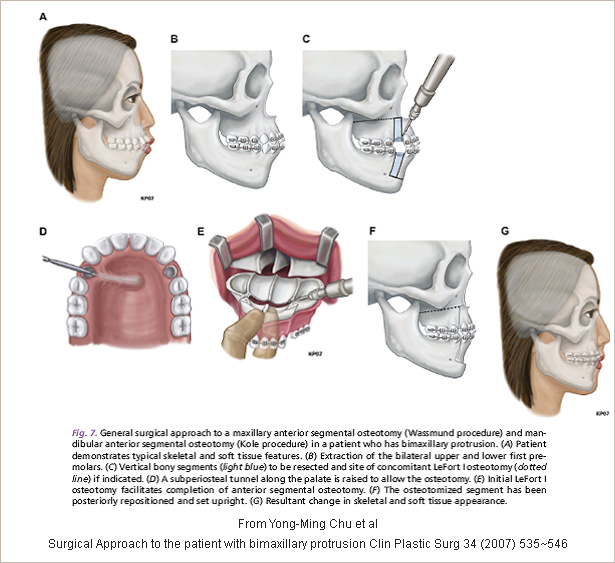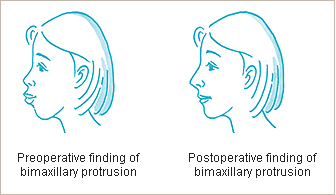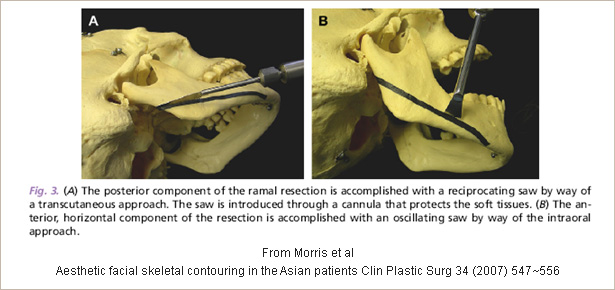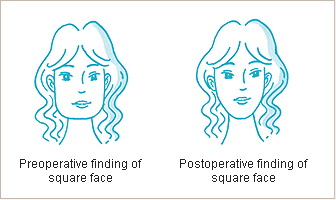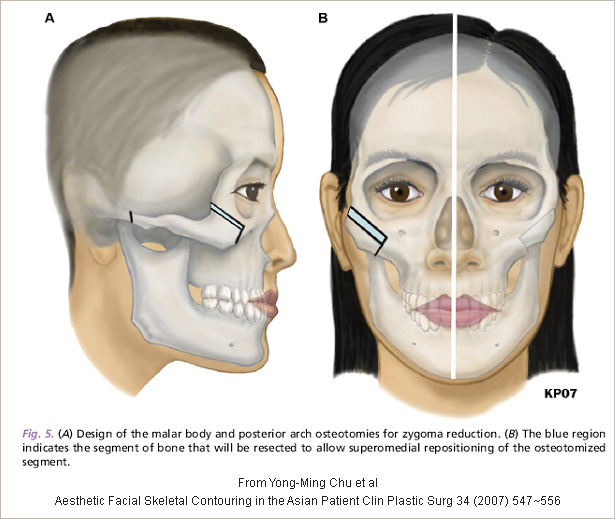Our Services
| Orthognathic Surgery | ||
|---|---|---|
Orthognathic Surgery
Mandibular prognathismMandibular prognathism implies that mandible is hyperplastic and protruded compared with the maxilla. In this case, occlusion is disturbed and tooth eruption is irregular. As a result, patients have difficulty in chewing and pronunciation. Elongated mandible without malocclusion is called ‘long face’. In Asian population, mandibular prognathism is often, however in Caucasian, hypoplastic mandible is more frequent. There is no peculiar discomfort in the daily life.
TreatmentThe main purpose of the correction of this condition is to restore the facial symmetry and normal occlusion. Treatment consist of 3 stages; 1st is preoperative orthodontic treatment, 2nd is orthognathic surgery on the mandible including SSRO (Sagittal Split Ramus Osteotomy), and the 3rd is postoperative orthodontic treatment. Preoperative orthodontic treatment is preparation for the orthognathic surgery. This takes about 6 months in average and allows the patient having close to the class II occlusion. Orthognathic surgery needs 3 to 7 days’ admission.
Postoperative careImmediately after the surgery, swelling gets severer for 2 to 3 days. After 4 to 5 days of surgery, swelling subsides gradually. Head elevation with ice massage can help resolving the edema. Soft dietary intake is recommended for 3 to 4 weeks and gargling is necessary. Although temporary paresthesia due to the residual edema may last for a while, it gets better. Daily activity and social life can be restored in 2 weeks. Finally, postoperative orthodontic treatment places the newly positioned maxilla and mandible in neutral occlusal plane. Orthoganthic surgery has best outcome with cooperation between the orthodontic specialist and orthognathic plastic surgeon.
Bimaxillary protrusion
Indication of surgeryIf the position of the alveolar bone is within the normal range and only the teeth are inclined, orthodontic treatment is tried first. However, if the teeth as well as alveolar bone are protruded, surgical intervention is necessary in addition to the orthodontic treatment. In most of the bimaxillary protrusion, plastic surgeon specialized in the orthognathic surgery and orthodontic specialist should cooperate for the best outcome.
Surgical treatmentUnder general anesthesia, surgery can be undergone and 3 to 4 days of hospitalization period are needed. In general, anterior segmental osteotomy (ASO) via intraoral incision is performed with extraction of premolar and setback of part of incisors and canine including alveolar bone. Orthodontic treatment following the surgery is necessary due to the change of position after the surgery and preoperative extraction of teeth is not infrequent.
Postoperative care
Square faceAlthough the appearance is also determined by the eye and nose, it depends on the facial contour fundamentally. When one has bilateral prominence on the mandibular angle on frontal view and has severe angulation on the lateral view, they are said to have square face. Slender line of mandible gives one generous appearance, however the wide and angular mandible makes one look strong and grave What can we do to treat the square face? Treatment modality is up to the etiology and type of the squre face. Hypertrophied mastication muscle caused by the genetic factor or the tendency of enjoying the tough food can be managed with the Botox toxin injection. However, in most cases, mandibular angle is also enlarged therefore surgery is mandatory. According to the shape of mandibular angle, surgical treatment is different. In general, mandibular angle is trimmed to be soft on lateral view and outer cortex that looks wide on the frontal view is resected
Bone graft or implant is inserted in case of short chin and ostectomy can be introduced in long chin. The whole procedure is performed under the general anesthesia and 4 to 5 days of hospitalization are necessary. Intraoral incision is applied and the invisible scar is left after the surgery.
Preoperative preparationPreoperative radiologic examination can help to differentiate the etiology of squre face whether it is up to the bone or the muscle. Preoperative orthodontic treatment is often necessary depending on the occlusal state. Smoking and drugs like aspirin are prohibited for 2 weeks before the surgery.
Postoperative care
Zygoma reduction Most of the Asian have sagittally flat and coronally wide face. In addition, if the patient has protruded zygoma, strong appearance is exaggerated. Because the zygoma is continued from the malar eminence to the preauricular area in topographic aspect, if the zygoma is hypertrophied, midface looks protruded and wide from side to side. With zygoma reduction, narrowing the width of face can be achieved and results in the slim and slender facial contour. However, if the correction of the square face is independently operated, zygoma may look relatively wider. Therefore, for more harmonized facial contour, simultaneous sugery of zygoma reduction and correction of square face is recommended
How we treatUnder general anesthesia, surgery is performed and 1 to 4 days of hospitalization period are necessary. Incision is made via oral and preauricular. Protruded area in anteroposterior direction is trimmed and widened area in coronal direction is fractured and internally positioned. Sometimes titanium or absorbable plates and screws are used to fix the fractured portion.
Postoperative care
|
||
- Previous
- Osmidrosis
- Next
- Craniosynostosis & Facial Asymmetry






